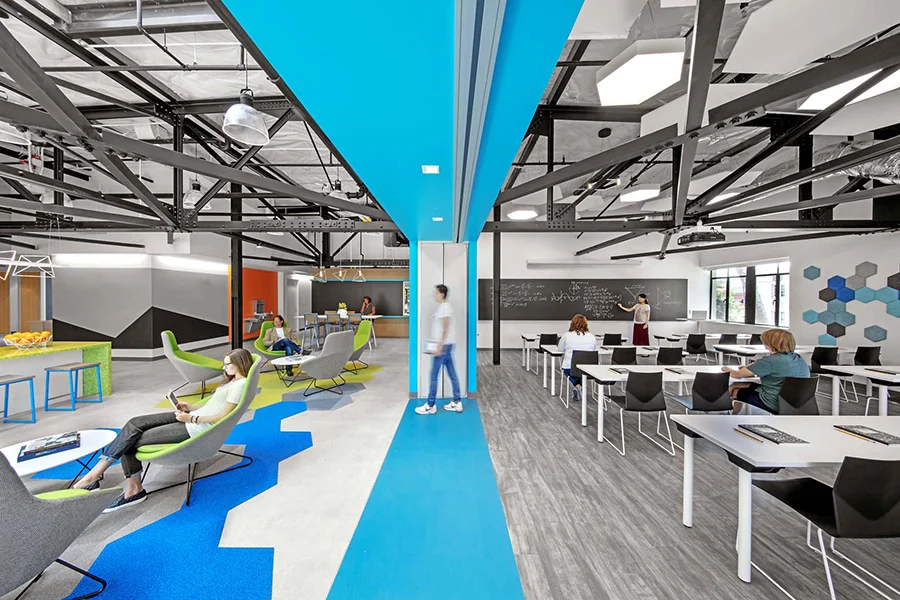HOK designed Convene’s Los Angeles HQ. Courtesy Bilyana Dimitrova
For the past year, the workplace incubator of global architecture firm HOK has been working on an idea it calls “space fusion.” That isn’t quite the casual neologism it might initially appear to be: The concept is being shepherded at HOK by senior associate Lisa Krutky Reed, a veteran restaurant and hotel designer who has long pondered the mysteries of prep stations and concierge desks. In recent years she has sensed a shift taking place, where the back-and front-of-house have begun to blur. Could the same thing happen in an office environment?
Of course, workplace design is already flush with similar crossover concepts. But as a recent Think Tank panel showed, there’s more to space fusion than just plunking down a lobby café or fitness room. The talk, which was hosted at HOK’s Los Angeles office, challenged the design assumptions of today’s workplace paradigm by calling into question this kind of industry benchmarking.
Designers should push back when clients look to emulate other workspaces. “There’s nothing innovative about seeing what others are doing” and replicating it, said Krutky Reed. Instead, she added, “the objective always should be to elevate the experience. Is it more cultured and sophisticated?”
Chalk it up to taste. If space fusion entails a commingling of “ingredients” sourced from different typologies (e.g., hospitality), it shouldn’t be thought of as a recipe to be followed to a T. Spontaneity can be a productive thing, so long as it comes from a place of organizational understanding, Krutky Reed added. “If you don’t understand the culture or the drivers or the company you’re designing for, that cafeteria may sit empty.” So whereas an in-house “milk bar” is appropriate for the Dairy Farmers of America headquarters (designed by HOK) in Kansas City, Kansas, it wouldn’t be for others.


